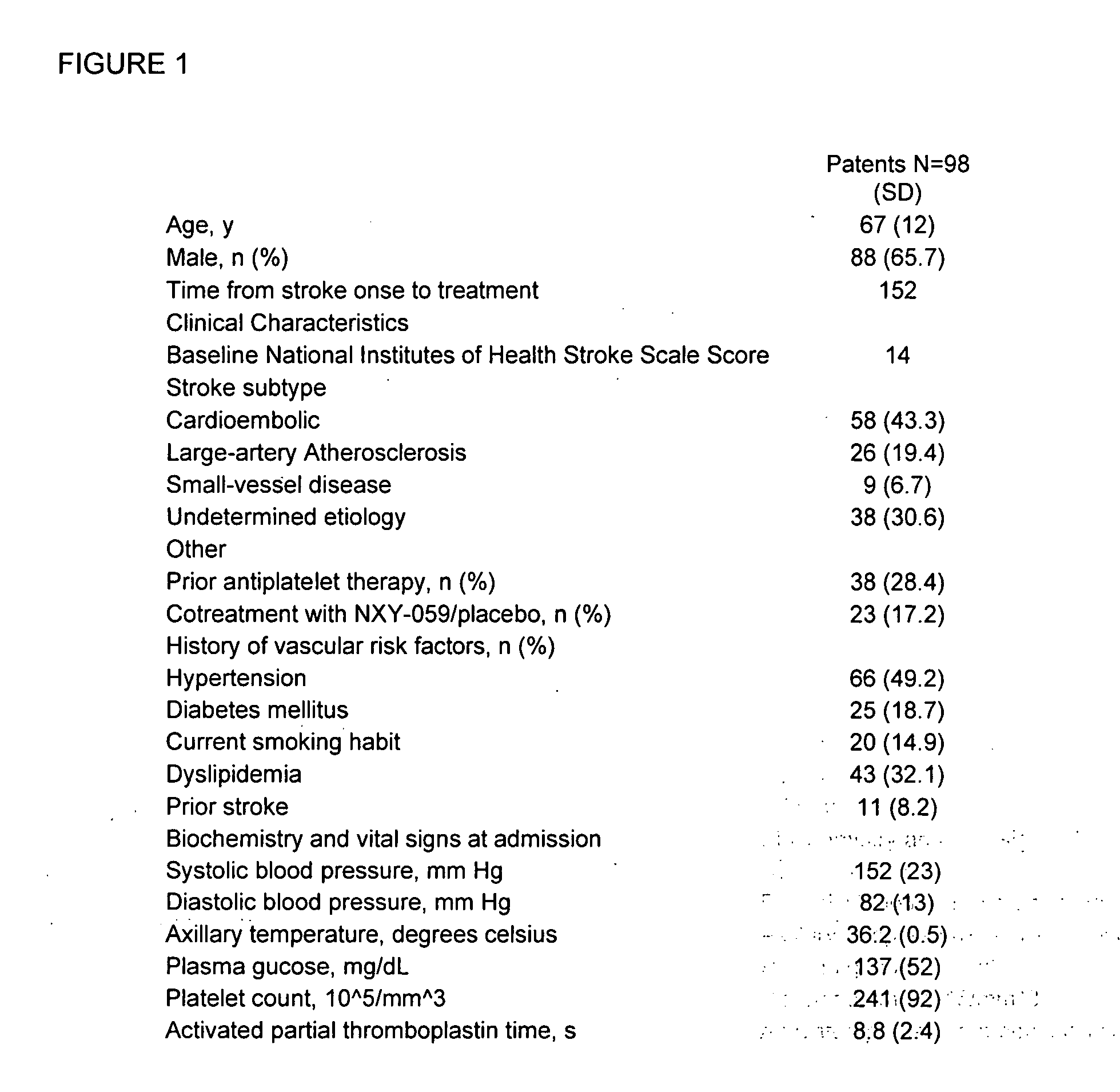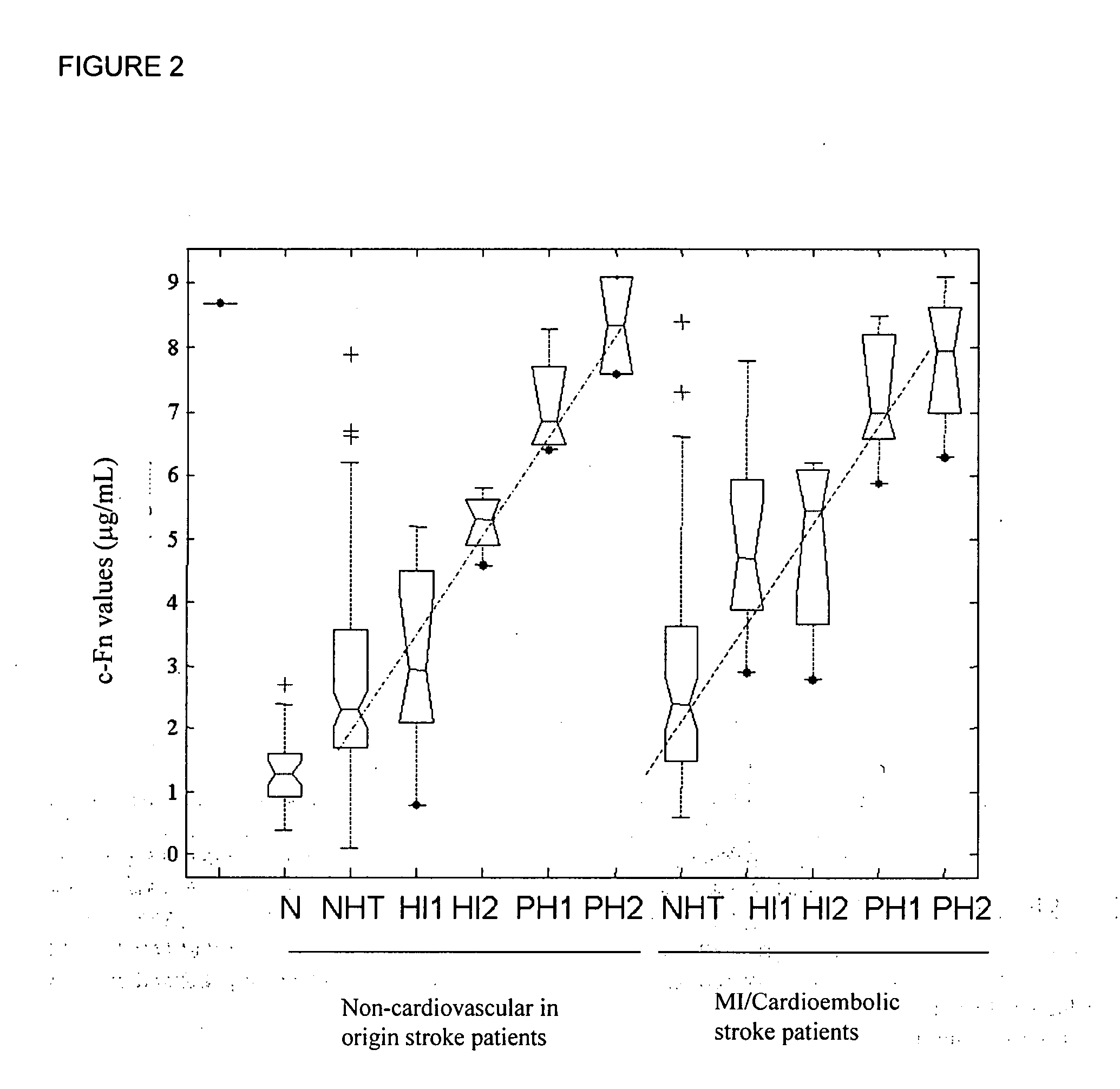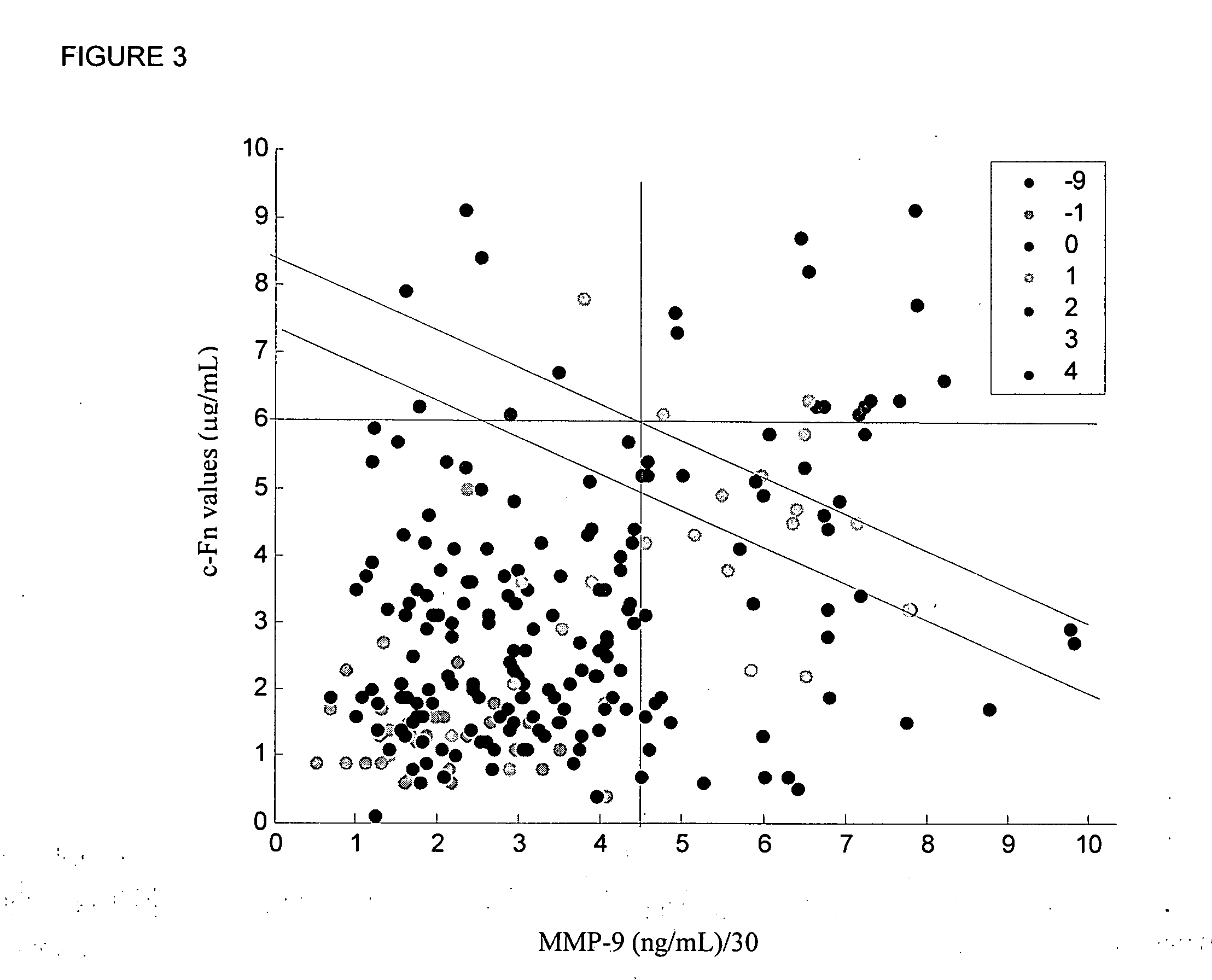Cellular fibronectin as a diagnostic marker in cardiovascular disease and methods of use thereof
- Summary
- Abstract
- Description
- Claims
- Application Information
AI Technical Summary
Benefits of technology
Problems solved by technology
Method used
Image
Examples
example i
Patients and Methods
[0106] In a prospective, multicenter study performed to identify predictors of hemorrage, a cohort of patients with a cardiovascular event such as MI or cardioembolic stroke and then were given a thrombolytic were analyzed (n=98). Patients were administered a thrombolytic within 12 hours of onset of symptoms. Exclusion criteria were age younger than 18, reasons for exclusion were known infectious, inflammatory, or neoplastic diseases at the time of treatment and nonavailability of blood samples at baseline. On arrival to the emergency department, blood pressure and body temperature were recorded and blood samples were taken. Each MI patient underwent a 12-lead electrocardiogram and subsequent evaluation of elevated ST segment. Each stroke patient underwent a baseline head CT scan if suspected and a Canadian Stroke Scale (CSS) evaluation by an experienced neurologist. Patients were admitted to a neurological ward or an acute cardiovascular unit and were treated b...
PUM
 Login to View More
Login to View More Abstract
Description
Claims
Application Information
 Login to View More
Login to View More - R&D
- Intellectual Property
- Life Sciences
- Materials
- Tech Scout
- Unparalleled Data Quality
- Higher Quality Content
- 60% Fewer Hallucinations
Browse by: Latest US Patents, China's latest patents, Technical Efficacy Thesaurus, Application Domain, Technology Topic, Popular Technical Reports.
© 2025 PatSnap. All rights reserved.Legal|Privacy policy|Modern Slavery Act Transparency Statement|Sitemap|About US| Contact US: help@patsnap.com



